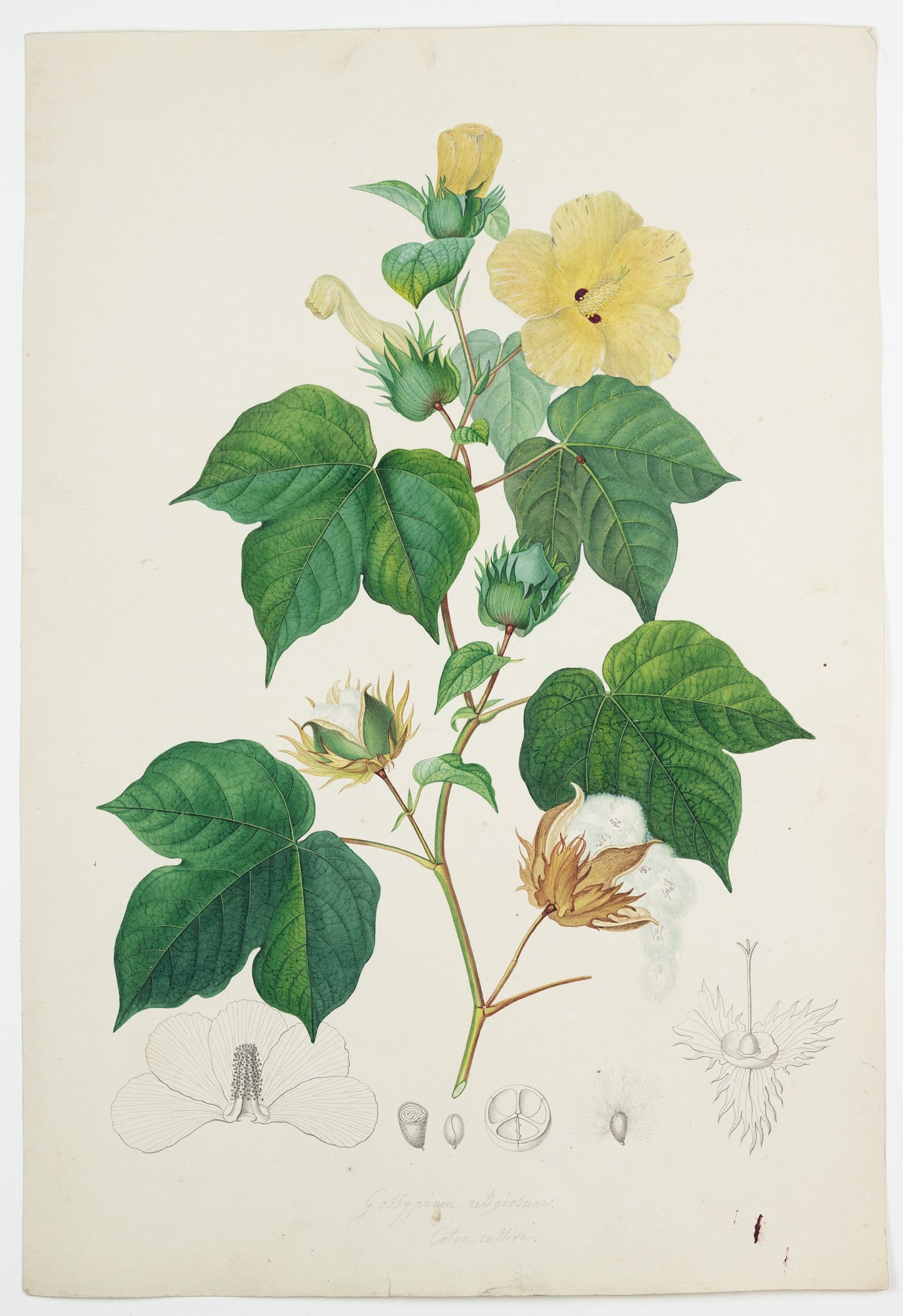from: Poiteau & Turpin Superb Botanical Drawings including varieties from the West Indies
PIERRE JEAN FRANÇOIS TURPIN (FRENCH, 1775–1840). Upland Cotton. 1808–1827.
PIERRE JEAN FRANÇOIS TURPIN (FRENCH, 1775–1840). Upland Cotton. 1808–1827.
Couldn't load pickup availability
PIERRE JEAN FRANÇOIS TURPIN
(FRENCH, 1775–1840)
“Gossypium religiosum Coton cultivé (Gossypium hirsutum, Mexican Cotton or Upland Cotton)”
Preparatory drawing for F.R. Tussac, Flore des Antilles, ou histoire générale botanique, rurale et économique des végétaux indigènes des Antilles.
Paris: chez l’auteur, F. Schoell et Hautel, 1808–1827
Vol. 2, Pl. 17
Watercolor and pencil on paper
Inscribed: “Gossypium religiosum Coton cultivé”
Paper size: 17 3/4 x 12 in.
Frame size: 25 3/4 x 18 3/8 in.
Tussac wrote of this plant:
“Of all the vegetable productions which grow in Asia, Africa, and America, the cotton plant must, in terms of its usefulness, hold second place; I have already given the first to the banana tree… independently of the healthy and pleasant food that the banana tree provides, if we are to believe an ancient tradition, the leaves of this beautiful plant are the largest and finest in their tissue that we can cite among all the plants, were used by our mother to make breeches for her husband, and to make a skirt; hence, leading to the trivial name of the banana fig tree as father Adam’s breeches.
There is only one species of native cotton plant found in the Antilles, which is known under the trivial name of maroon cotton plant; I regard it as identical to the one I am describing…. The species that are preferably cultivated in the West Indies are the hairy cotton (Gossypium hirsutum) with white wool, and its variety with tawny wool, one with hairy seeds adhering to the wool, the other with glabrous seeds that come off easily. It is particularly this species that is cultivated in Santo Domingo… this cotton tree has the advantage of lasting five to six years, by pruning the dead branches every year, it is also less subject to being devoured by caterpillars, which seem to be put off by the little down with which the leaves are covered.”

Appeared in F.R. Tussac, Flore des Antilles, ou histoire générale botanique, rurale et économique des végétaux indigènes des Antilles.
Paris: chez l’auteur, F. Schoell et Hautel, 1808–1827
Vol. 2, Pl. 17


